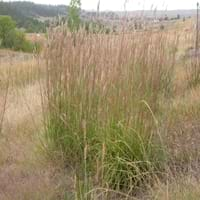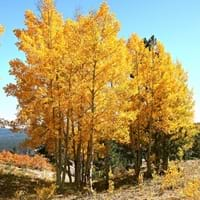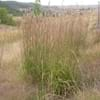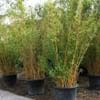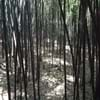Life Span
Perennial
Perennial
Origin
North America, United States, Northeastern United States, Mid-Atlantic United States, Southeastern United States, North-Central United States, Central United States, South-Central United States, Southwestern United States, Texas, Canada, Mexico
North America
Types
Not Available
Not Available
Habitat
meadows, Prairies, Riverbanks, Roadsides, Woods
Forest margins, gardens, Roadsides, Woodlands
USDA Hardiness Zone
2-7
1-8
Sunset Zone
1a, 1b, 2a, 2b, 3a, 3b, 4, 5, 6, 7, 8, 9, 14, 15, 16, 17, 18, 19, 20, 21, 22, 23, 24
A1, A2, A3, 1a, 1b, 2a, 2b, 3a, 3b, 4, 5, 6, 7, 14, 15, 16, 17, 18, 19
Habit
Clump-Forming
Upright/Erect
Flower Color
Purple
Not Available
Flower Color Modifier
Bicolor
Bicolor
Fruit Color
Not Available
Brown
Leaf Color in Spring
Green
Blue Green, Dark Green
Leaf Color in Summer
Light Green
Blue Green, Dark Green
Leaf Color in Fall
Blue Green, Burgundy, Bronze
Yellow, Blue Green
Leaf Color in Winter
Tan, Sandy Brown
Not Available
Leaf Shape
Grass like
Heart-shaped
Plant Season
Summer, Fall, Winter
Spring, Summer, Fall
Sunlight
Full Sun, Partial Sun
Full Sun
Type of Soil
Loam, Sand
Clay, Loam, Sand
The pH of Soil
Neutral, Alkaline
Acidic, Neutral
Soil Drainage
Well drained
Average
Bloom Time
Late Summer, Early Fall, Fall
Spring
Tolerances
Not Available
Salt
Where to Plant?
Container, Ground, Pot
Ground
How to Plant?
Seedlings
From Rhizomes
Plant Maintenance
Medium
Medium
Watering Requirements
Average Water Needs, Do Not over Water, Medium
Prefer drip-irrigation instead of Over-head watering, Water more in summer
In Summer
Lots of watering
Lots of watering
In Spring
Moderate
Moderate
In Winter
Average Water
Average Water
Soil pH
Neutral, Alkaline
Acidic, Neutral
Soil Type
Loam, Sand
Clay, Loam, Sand
Soil Drainage Capacity
Well drained
Average
Sun Exposure
Full Sun, Partial Sun
Full Sun
Pruning
Remove damaged leaves, Remove dead branches, Remove dead leaves, Remove dead or diseased plant parts
Prune to control growth, Remove deadheads, Shape and thin as needed
Fertilizers
All-Purpose Liquid Fertilizer
20-20-20 amount, All-Purpose Liquid Fertilizer, Apply 10-10-10 amount
Pests and Diseases
Red blotch
Insects
Plant Tolerance
Not Found
Drought
Flowers
Yes
Insignificant
Flower Petal Number
Single
Not Available
Foliage Texture
Medium
Medium
Foliage Sheen
Matte
Glossy
Attracts
Birds, Butterflies
Not Available
Allergy
Not Available
no allergic reactions
Aesthetic Uses
Ground Cover, Landscape Designing, Showy Purposes
Showy Purposes
Beauty Benefits
Not Available
Not Available
Edible Uses
Insignificant
No
Environmental Uses
Air purification, Food for animals, Prevent Soil Erosion
Air purification
Medicinal Uses
Not Available
No Medicinal Use
Part of Plant Used
Leaves, Stem
Bark, Pulp
Other Uses
Decoration Purposes, Food for animals
Used in paper industry, Wood is used for making furniture, Wood is used in construction
Used As Indoor Plant
Insignificant
No
Used As Outdoor Plant
Yes
Yes
Garden Design
Cutflower, Dried Flower/Everlasting, Mixed Border, Screening / Wind Break, Wildflower
Shade Trees
Botanical Name
ANDROPOGON gerardii
POPULUS tremuloides
Common Name
Big Bluestem, Turkey Foot
Quaking Aspen
In Hindi
Big Bluestem grass
Quaking Aspen
In German
Große Bartgras
Zitterpappel
In French
Barbon de Gérard herbe
tremble
In Spanish
hierba andropogon grande
Temblor Aspen
In Greek
Big BLUESTEM γρασίδι
τρεμώδεις Aspen
In Portuguese
Vetiver grande grama
Quaking Aspen
In Polish
Big Bluestem trawa
Quaking Aspen
In Latin
Big bluestem herba
Tremens Quisque
Phylum
Magnoliophyta
Tracheophyta
Class
Lillosida
Magnoliopsida
Order
Poaceae
Malpighiales
Family
Poaceae
Salicaceae
Clade
Angiosperms, Commelinids, Monocots
Angiosperms, Eudicots, Rosids
Tribe
Not Available
Saliceae
Subfamily
Not Available
Not Available
Number of Species
Not Available
Importance of Big Bluestem and Quaking Aspen
Want to have the most appropriate plant for your garden? You might want to know the importance of Big Bluestem and Quaking Aspen. Basically, these two plants vary in many aspects. Compare Big Bluestem and Quaking Aspen as they differ in many characteristics such as their life, care, benefits, facts, etc. Every gardener must at least have the slightest clue about the plants he wants to plant in his garden. Compare their benefits, which differ in many ways like facts and uses. The medicinal use of Big Bluestem is Not Available whereas of Quaking Aspen is No Medicinal Use. Big Bluestem has beauty benefits as follows: Not Available while Quaking Aspen has beauty benefits as follows: Not Available.
Compare Facts of Big Bluestem vs Quaking Aspen
How to choose the best garden plant for your garden depending upon its facts? Here garden plant comparison will help you to solve this query. Compare the facts of Big Bluestem vs Quaking Aspen and know which one to choose. As garden plants have benefits and other uses, allergy is also a major drawback of plants for some people. Allergic reactions of Big Bluestem are Not Available whereas of Quaking Aspen have no allergic reactions respectively. Having a fruit bearing plant in your garden can be a plus point of your garden. Big Bluestem has no showy fruits and Quaking Aspen has no showy fruits. Also Big Bluestem is flowering and Quaking Aspen is not flowering . You can compare Big Bluestem and Quaking Aspen facts and facts of other plants too.
